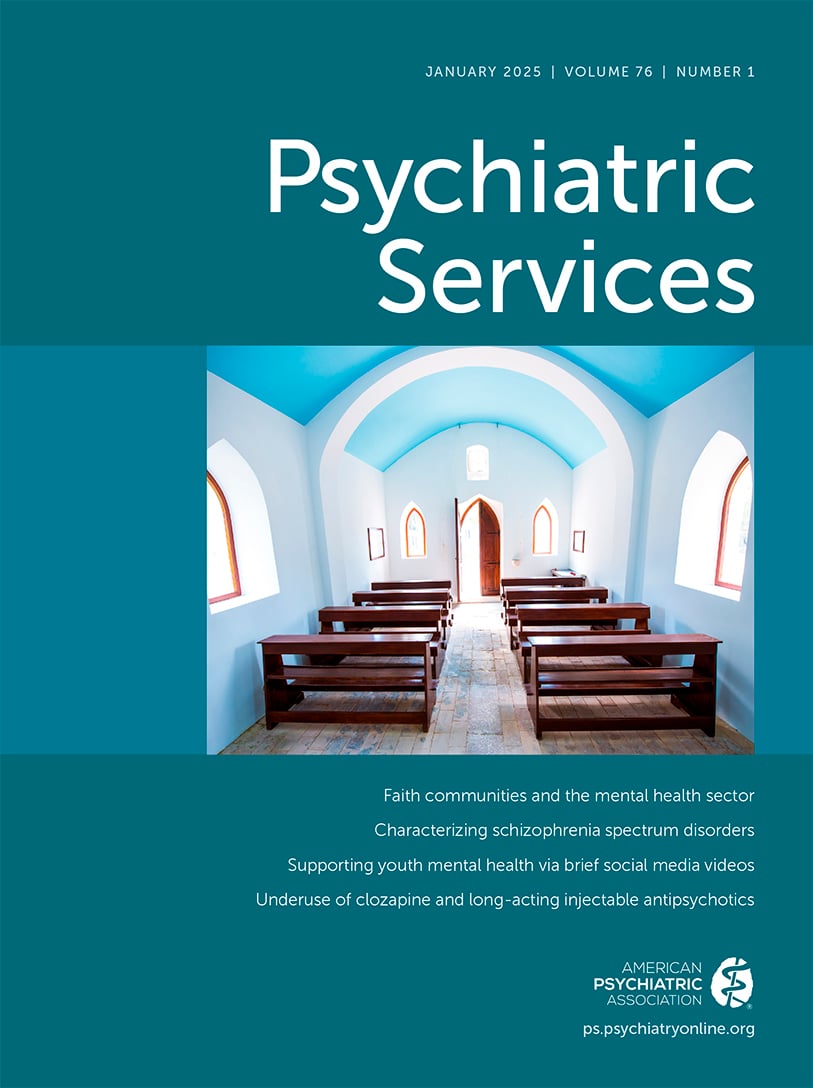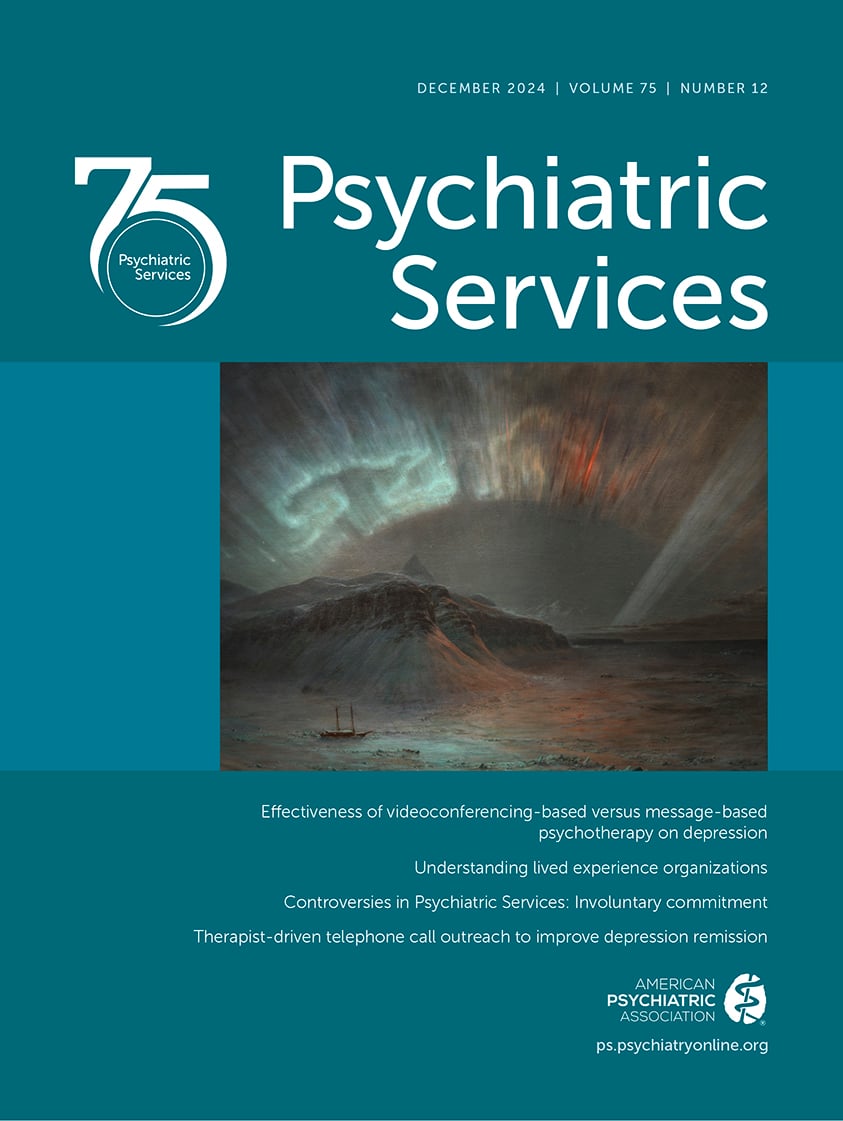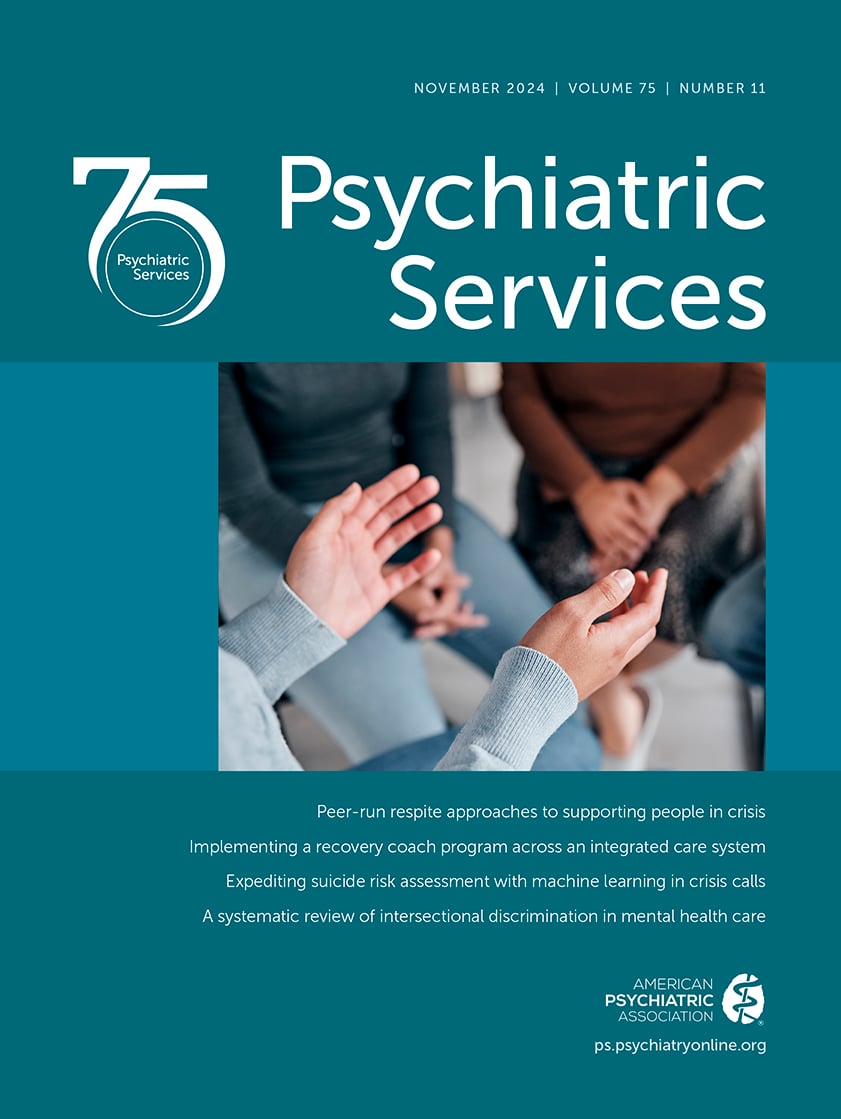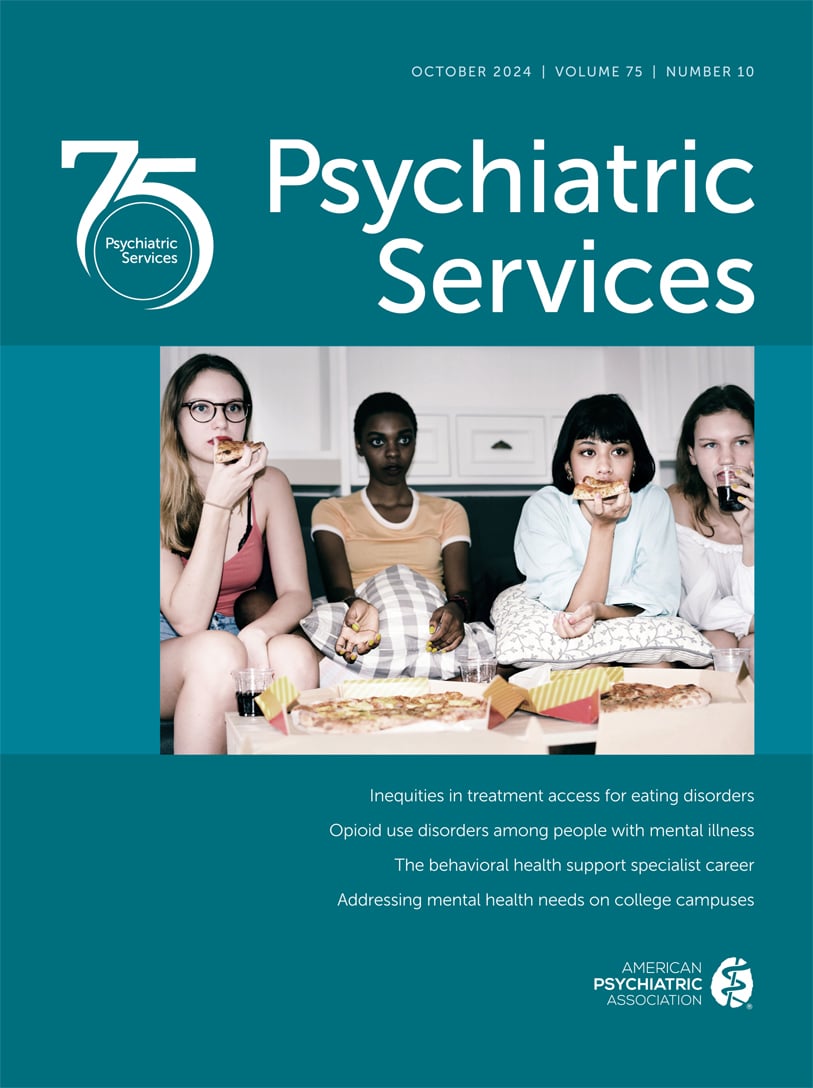Psychiatric Services
- Volume 36
- Number 3
- March 1985
Article
Publication date: 01 March 1985
Pages233–235This month's treatment planning column is an edited version of a grand rounds held at Mt. Sinai Hospital in New York City. It has been prepared by Dr. Greenwald, an instructor in the department of psychiatry of the School of Medicine; Dr. Denicoff, a ...
https://doi.org/10.1176/ps.36.3.233Publication date: 01 March 1985
Pages239–241Itroduction by Dr. Shrfstein: This month's case is most timely. The ahility of seriously and chronically ill psychiatric patients to fit within a health maintenance organization (HMO) model of organizing and paying for care is a pressing problem. This ...
https://doi.org/10.1176/ps.36.3.239Publication date: 01 March 1985
Pages245–246In the February issue of H&CP Susan Linn, Ed.M., and William Beardslee, M.D. (1), described their innovative work with the use of puppets in therapy as a short-term intervention for pediatric patients at Children's Hospital Medical Center in Boston. ...
https://doi.org/10.1176/ps.36.3.245Publication date: 01 March 1985
Pages254–259The insanity defense has come under increased criticism after the highly publicized acquittal of John Hinckley, Jr. A variety of proposals have been suggested to rectify the perceived injustices of an insanity acquittal. In 1975 Michigan passed a guilty ...
https://doi.org/10.1176/ps.36.3.254Publication date: 01 March 1985
Pages259–264The three relatively standard criteria currently contained in most state civil commitment laws (danger to self, danger to others, and gravely disabled) have forced many obviously ill patients to deteriorate to the point of dangerousness before receiving ...
https://doi.org/10.1176/ps.36.3.259Publication date: 01 March 1985
Pages265–267State mental health directors and state attorneys general were surveyed on the use of outpatient commitment in their states. The survey found considerable disagreement between the two groups on responses to several of the items, including whether ...
https://doi.org/10.1176/ps.36.3.265Publication date: 01 March 1985
Pages268–271National attention has focused on criminal defendants who plead not guilty by reason of insanity, but the insanity defense is rarely successful. A far larger number of criminal defendants, estimated at 9,000 annually, are admitted to forensic and civil ...
https://doi.org/10.1176/ps.36.3.268Publication date: 01 March 1985
Pages271–274Certain mentally ill patients who repetitively commit minor crimes as part of their lifestyle rather than because of psychotic thinking are best managed by a cooperative effort between the criminal justice and the mental health systems. This effort, which ...
https://doi.org/10.1176/ps.36.3.271Publication date: 01 March 1985
Pages275–282The diagnosis of atypical depression has been used in a variety of ways in the psychiatric literature. The authors review the different uses of the term and then examine the syndrome's capacity to reliably predict course of illness, family prevalence, ...
https://doi.org/10.1176/ps.36.3.275Publication date: 01 March 1985
Pages283–287The American Psychiatric Association's task force report on tardive dyskinesia recommends that when a clinician wishes to prescribe a maintenance regimen of neuroleptic drugs, patients and families be advised of the risks and benefits so that a mutual ...
https://doi.org/10.1176/ps.36.3.283Publication date: 01 March 1985
Pages287–290Psychiatric inpatients are prone to the use of alcohol, often in attempts to self-medicate. A retrospective review of patient records in a Veterans Administration neuropsychiatric facility identified 28 patients for whom use of alcohol was documented ...
https://doi.org/10.1176/ps.36.3.287Publication date: 01 March 1985
Pages291–293The authors compared the diagnoses made for 50 patients in an emergency room with those made during a subsequent inpatient hospitalization. They found an acceptable level of reliability for broad diagnostic categories, such as psychosis, depression, and ...
https://doi.org/10.1176/ps.36.3.291Publication date: 01 March 1985
Pages294–297The impaired physician movement gained prominence in 1972 with the American Medical Association (AMA) council on mental health report entitled The Sick Physician. The movement grew as a necessary reaction to the conflicts inherent in the healing ...
https://doi.org/10.1176/ps.36.3.294Past Issues
View Issues Archive
Vol. 76 | No. 1

Vol. 75 | No. 12

Vol. 75 | No. 11
